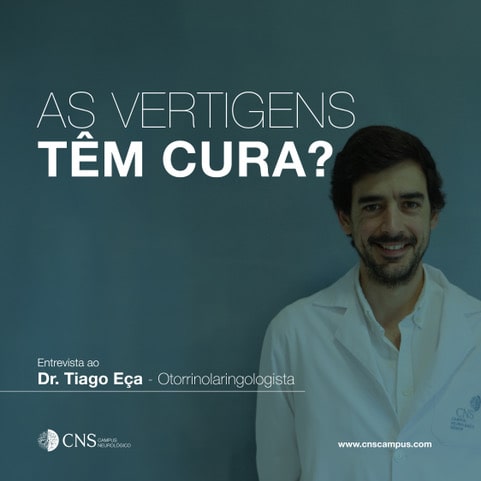Tiago Eça, an Otorhinolaryngologist at CNS – Campus Neurológico, clarified the concept of vertigo, explored its causes, and explained the importance of accurate diagnosis for its treatment. Additionally, he mentioned functional recovery methods and addressed some preventive strategies.
Can you clarify what vertigo is?
Tiago Eça (TE) – Vertigo is a symptom defined as an illusion of movement. It’s the sensation that the environment around us is moving when it’s not (external vertigo) or that our body is moving in relation to the environment (internal vertigo). Sometimes, we use the term “Vertigo Syndrome,” but it’s just a term that encompasses the set of signs and symptoms that occur simultaneously with vertigo, such as nausea, vomiting, and/or imbalance, and it’s not a diagnosis.
What causes vertigo?
TE – Vertigo can be a symptom of inner ear injury, the nerve that carries balance information to the brain, or regions of the Central Nervous System that process balance information, eye movements, or even vision.
The most common causes of vertigo are Benign Paroxysmal Positional Vertigo (BPPV), commonly referred to as “Crystalline Vertigo,” which involves the displacement of particles within the inner ear, resulting in a clinical picture of vertigo triggered by head movements. Another very common etiology is vertigo associated with migraine or vestibular migraine, which can present in various ways, from mimicking BPPV to situations where vertigo occurs spontaneously and simulates a situation of inflammatory injury to the balance nerve (vestibular neuritis).
One etiology whose name is widely known in the non-medical community is Ménière’s Disease, characterized by recurrent episodes of vertigo, tinnitus (ringing in the ears), and a sensation of plugged ears, which occur spontaneously. This disease is characterized by the dilation of the inner ear, which can now be characterized by specific methods of magnetic resonance imaging, although it is still not exactly known what causes this alteration.
What types of treatments are available for vertigo?
TE – It is essential to obtain a correct diagnosis because treatment may consist of positional maneuvers for particle repositioning (in the case of BPPV) or be based on medication, both on an as-needed basis and prophylactically to prevent further episodes (in the case of vestibular migraine). It is important that pharmacological treatment be directed toward a specific diagnosis and that “anti-vertigo” medications not be taken regardless of the diagnosis and for an indefinite period to avoid consequences of prolonged use of these drugs.
Treatment and recovery for people with vertigo often involve a specific modality of physiotherapy, vestibular rehabilitation, in which adaptation, substitution, and habituation techniques are used to restore each person’s functional autonomy.
Is there any way to prevent vertigo?
TE – In diseases that have a recurrent or periodic nature, there are treatments aimed at preventing the onset of vertigo. In vestibular migraine, for example, triggering factors should be avoided, which can vary from person to person. In Ménière’s Disease, we know that having quality sleep, paying attention to the amount of water ingested during the day, and adopting balanced and healthy eating habits are the fundamental pillars to prevent the onset of vertigo.
